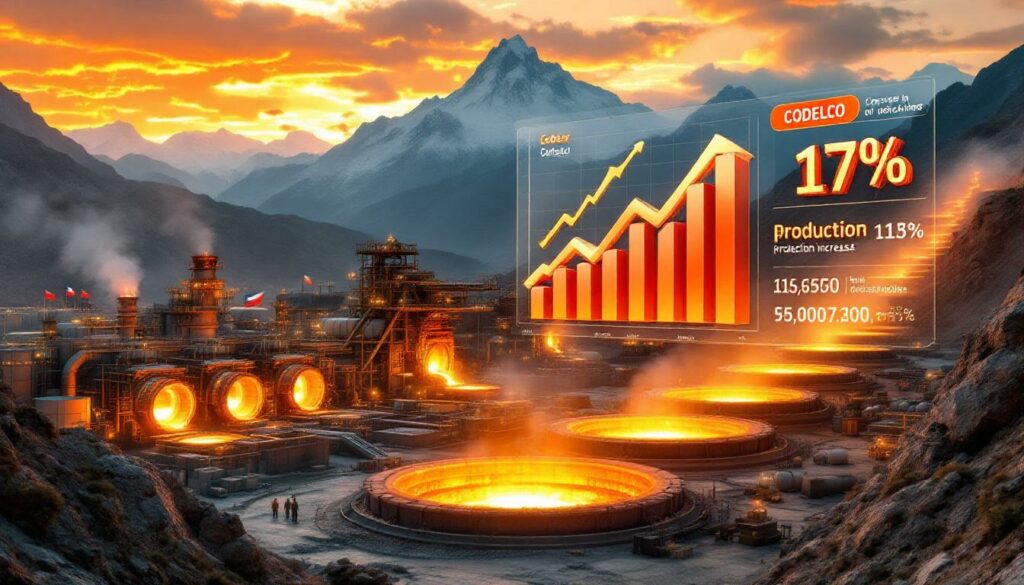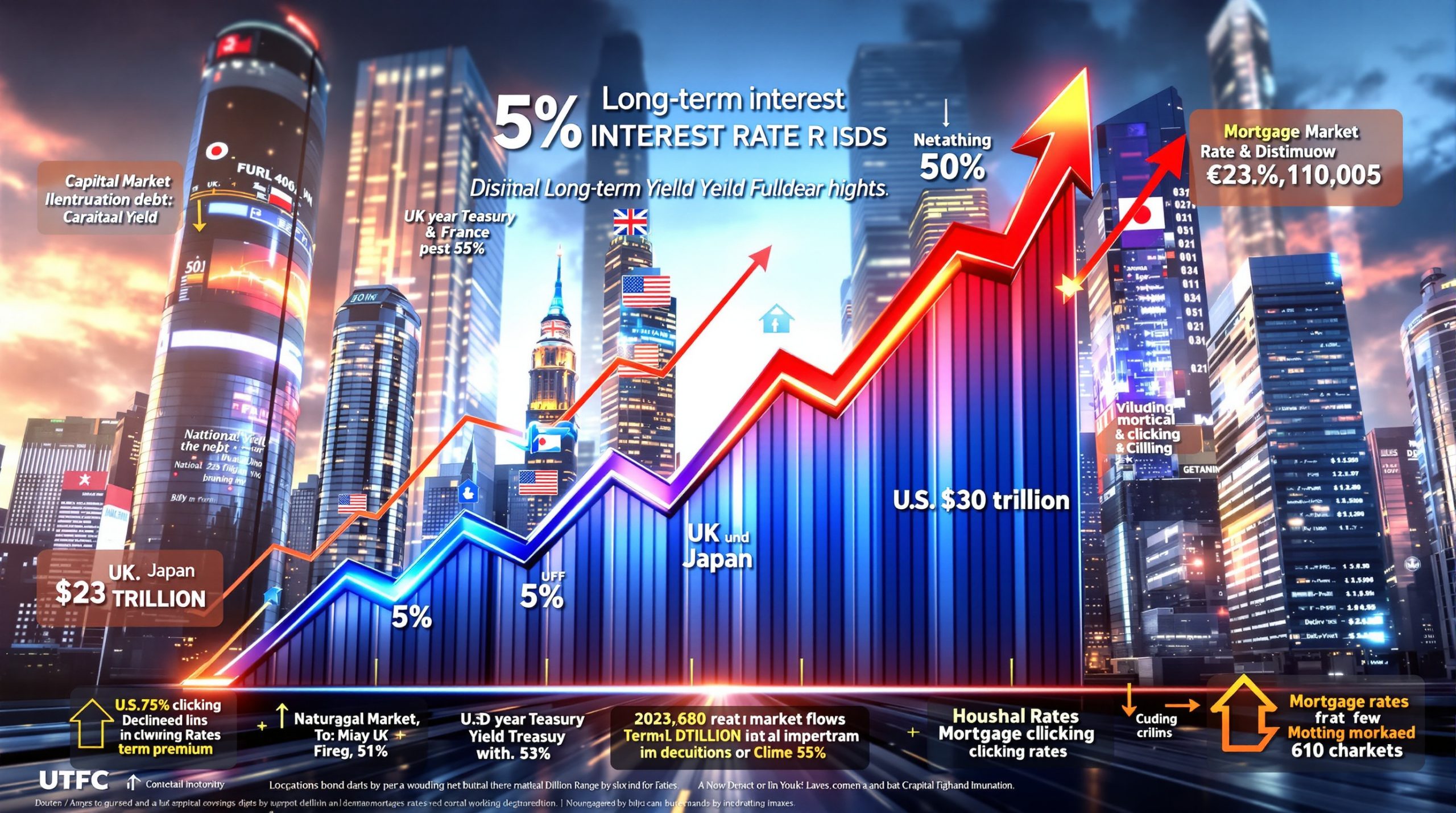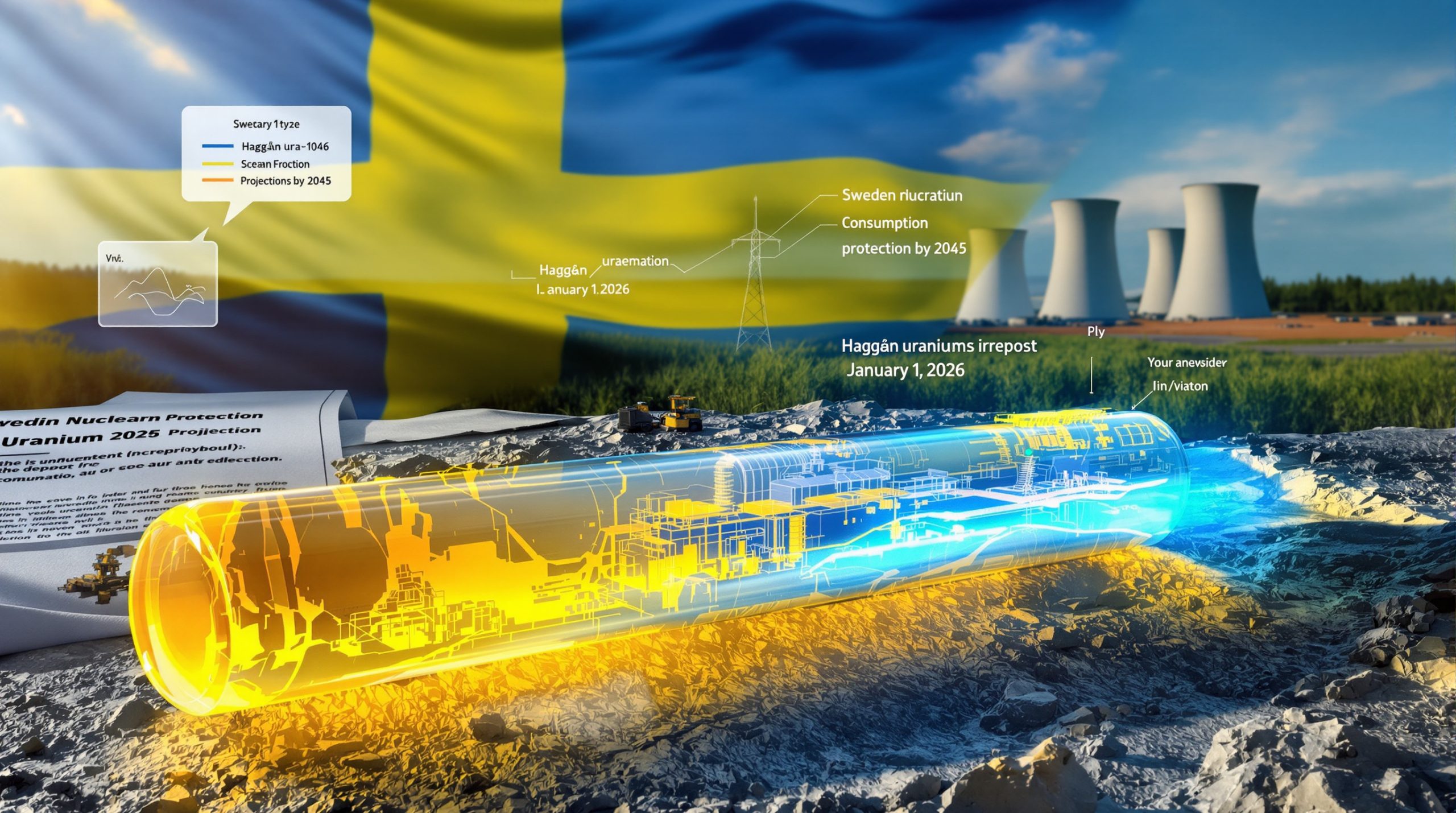What Caused Codelco's Copper Production to Jump 17% in May?
Chile's state-owned mining giant Codelco reported a remarkable 16.5% year-over-year increase in copper production this May, with output reaching 130,100 metric tons according to data from Cochilco (Chilean Copper Commission). This substantial growth comes at a critical time for global copper markets and represents a significant operational achievement for the world's largest copper producer.
The production surge marks a turning point for Codelco, which has been implementing strategic operational improvements while navigating challenging market conditions. According to mining industry analysts, this increase strengthens Chile's position as the global leader in copper production, currently accounting for approximately 24% of worldwide output.
Key Production Figures and Growth Metrics
The May production figures reveal Codelco's strongest monthly performance in over two years. The 130,100 metric tons produced represent not only a 16.5% increase compared to May of the previous year but also a sequential improvement from April 2025.
"Copper production from Chilean state-run miner Codelco ticked up some 16.5% year-over-year in May," reported Fabian Cambero of Reuters, highlighting the significance of this growth amid global supply concerns.
This production boost occurred despite ongoing operational challenges, including declining ore grades across many Chilean mines, which have averaged around 0.5% in recent years compared to 0.8% a decade ago.
Codelco's Position in Global Copper Markets
As the world's largest copper mining company, Codelco's production figures have outsized influence on global supply chains and market sentiment. The company produces more copper annually than its closest competitors Freeport-McMoRan (1.7 million tonnes/year) and Glencore (1.2 million tonnes/year).
The strategic importance of Codelco to Chile's economy cannot be overstated, with copper exports representing 10-15% of the country's GDP according to Central Bank of Chile data. The mining sector directly employs over 200,000 Chileans, with Codelco being a primary employer in several regions.
This production increase reinforces Chile's dominant position as the world's top copper-producing nation, far ahead of second-place Peru and third-place China in terms of mining output.
How Does This Production Increase Impact Global Copper Supply?
Codelco's 17% production increase has significant implications for global copper markets, which have been characterized by tight supply and surging copper demand from multiple sectors.
Current Global Copper Production Landscape
According to a recent Fitch BMI report, global copper mine output is projected to grow at 2.9% annually over the next decade, expanding from 23.8 million tonnes in 2025 to 30.9 million tonnes by 2034. Within this context, Codelco's May output represents approximately 0.5% of projected 2025 global supply.
The production boost comes at a pivotal moment for copper markets, as several major mining regions face challenges:
- Peru continues to experience political uncertainty affecting mining investments
- The Democratic Republic of Congo faces infrastructure and power limitations
- Indonesia's copper production remains constrained by complex regulations
- Australia and Canada are developing new mines but face lengthy permitting processes
Codelco's ability to increase production helps offset these global supply concerns, providing some stability to a market approaching deficit conditions.
Supply-Demand Dynamics in the Copper Market
The copper market faces unprecedented demand pressure from several sectors:
- Renewable energy expansion: Solar and wind power installations require 4-5 times more copper than traditional power generation
- Electric vehicle manufacturing: Each EV uses approximately 80kg of copper, compared to 20kg in conventional vehicles
- Grid infrastructure upgrades: Power transmission improvements in developing economies demand substantial copper inputs
- Industrial automation: Smart manufacturing facilities require extensive copper wiring and components
While Codelco's increased production helps address these demand drivers, industry analysts note that even with the recent boost, global supply growth still lags behind projected demand increases for the next five years. This supply gap has led to significant copper price predictions showing potential record highs in the coming years.
What Operational Improvements Enabled Codelco's Production Surge?
The impressive production growth didn't happen by chance. Codelco has implemented multiple strategic initiatives to reverse previous production declines and maximize output from its extensive mining portfolio.
Modernization and Efficiency Initiatives
Codelco has invested heavily in technological advancements across its operations:
- Implementation of autonomous drilling systems at the Andina and El Teniente operations
- Deployment of AI-driven drilling advances to reduce unplanned downtime
- Integration of real-time monitoring systems for crushing and grinding circuits
- Optimization of flotation processes through advanced control algorithms
- Improved ore sorting technologies to process lower-grade materials efficiently
These technological improvements have increased throughput while reducing costs, allowing Codelco to process more material despite declining ore grades.
Strategic Investment in Mine Development
Capital expenditure has been crucial to Codelco's production growth. The company has focused on:
- Development of deeper mining levels at the El Teniente underground operation
- Expansion of the Chuquicamata underground project to replace declining open-pit production
- Infrastructure improvements at Radomiro Tomic to increase leaching efficiency
- Optimization of mine sequencing to access higher-grade zones within existing operations
- Structural reinforcements enabling increased extraction rates in underground sections
While specific investment figures for these projects weren't disclosed in the production report, industry estimates suggest Codelco has committed over $40 billion to structural projects aimed at extending mine life and increasing production capacity.
How Does This Impact Chile's Mining Sector?
Codelco's production surge has broad implications for Chile's entire mining sector and economy.
Economic Significance for Chile
Copper exports represent Chile's most important source of foreign exchange, with significant impacts across the economy:
- GDP contribution: Copper mining accounts for 10-15% of Chile's total economic output
- Export revenue: Copper represents approximately 50% of Chile's export earnings
- Fiscal impact: Mining royalties and taxes provide essential government revenue
- Employment stability: Each direct mining job supports an estimated 2.5 additional jobs in the broader economy
The increased production from Codelco strengthens government finances, as the state-owned company transfers significant portions of its profits to the national treasury. These funds support social programs, infrastructure development, and economic diversification efforts.
Regulatory and Policy Environment
Chile's government has implemented policies supporting mining sector growth while addressing environmental and social concerns:
- Streamlined permitting processes for production increases at existing operations
- Enhanced environmental monitoring requirements with transparent reporting
- Community benefit-sharing agreements mandated for new mining developments
- Investment in technical education programs to develop skilled mining workforce
President Gabriel Boric's administration has emphasized the importance of modernizing Chile's mining sector while ensuring environmental protection and social inclusion. The production increase demonstrates that these objectives can be balanced effectively.
What Challenges Does Codelco Face Despite Production Growth?
Despite the impressive production figures, Codelco continues to face substantial challenges that could impact future performance.
Operational and Cost Pressures
Several factors are pressuring Codelco's operational margins:
- Energy costs: Electricity represents 12-15% of operational expenses, with prices rising due to inflation
- Water scarcity: Approximately 70% of Chilean mines operate in water-stressed regions, requiring expensive desalination and recycling systems
- Labor costs: Skilled worker shortages and strong unions have pushed wages higher
- Declining ore grades: The average copper content in Codelco's mines continues to decrease, requiring more material to be processed for the same metal output
- Aging infrastructure: Some facilities require significant maintenance and upgrades to maintain operational efficiency
These challenges require continuous innovation and investment to maintain production levels, placing pressure on Codelco's financial resources.
Market and Trade Uncertainties
Codelco's market position faces potential disruption from geopolitical and trade factors:
- Potential US tariffs: Reports indicate the United States is considering implementing 50% tariffs on Chilean copper imports, which would significantly impact export economics
- Political uncertainty: President Gabriel Boric has publicly addressed the tariff concerns, stating: "I have yet to hear from the US" and calling for "official communication" on the matter
- Competition from other producers: Indonesia, DRC, and Peru are all working to increase their market share in global copper production
- Price volatility: Copper prices have fluctuated significantly, challenging long-term planning and investment decisions
The tariff issue is particularly concerning, as the US represents a major market for Chilean copper. Any trade restrictions would force Codelco to adjust its sales strategy and potentially accept lower margins on redirected exports. The recent Glencore copper smelter shutdown in Chile further complicates the national copper landscape.
What Are the Environmental Implications of Increased Production?
Higher production volumes inevitably raise questions about environmental impact. Codelco has implemented several initiatives to address these concerns.
Sustainability Initiatives and Environmental Management
Codelco's environmental programs focus on several critical areas:
- Water management: Implementation of closed-loop water systems achieving up to 85% recycling rates at some operations
- Energy efficiency: Gradual transition to renewable energy sources, with several operations now using solar power for portions of their energy needs
- Tailings management: Advanced filtering and dry-stacking methods to reduce water usage and environmental risk
- Emissions reduction: Fleet electrification projects and ventilation optimizations to decrease carbon emissions
- Land rehabilitation: Progressive mine reclamation strategies at older mining areas
These initiatives are essential for maintaining Codelco's social license to operate while complying with increasingly stringent environmental regulations.
Community Relations and Social License
Codelco has evolved its approach to community engagement:
- Formal consultation processes with indigenous communities affected by mining operations
- Local hiring initiatives providing preferential employment opportunities for nearby residents
- Educational partnerships with technical schools to develop skilled workforce from mining regions
- Community investment funds supporting local infrastructure and economic diversification
- Transparent environmental monitoring with public reporting of key performance indicators
These social programs help mitigate community concerns about increased production levels while ensuring mining benefits are shared more broadly.
How Does Codelco's Performance Compare to Other Major Copper Producers?
Codelco's production surge invites comparison with other global copper mining giants.
Competitive Landscape Analysis
Among major copper producers, Codelco stands out in several ways:
| Producer | Annual Production (approx.) | Cost Position | Reserve Life |
|---|---|---|---|
| Codelco | 1.8 million tonnes | Mid-tier | 70+ years |
| Freeport-McMoRan | 1.7 million tonnes | Low-cost | 30+ years |
| Glencore | 1.2 million tonnes | Mid-tier | 25+ years |
| BHP | 1.0 million tonnes | Low-cost | 50+ years |
| Southern Copper | 0.9 million tonnes | Low-cost | 80+ years |
While Codelco maintains the highest production volume, its cost position has historically been higher than some competitors due to lower average ore grades and older infrastructure. However, the recent production increases suggest operational improvements are addressing these disadvantages.
Investment Attractiveness Factors
As a state-owned enterprise, Codelco differs from publicly traded mining companies in several ways:
- Capital allocation: Prioritizes long-term national interests over quarterly shareholder returns
- Investment horizon: Able to pursue decades-long development projects with extended payback periods
- Social mandate: Required to balance commercial objectives with broader economic development goals
- Governance structure: Oversight from government officials rather than independent board members
These factors create both advantages and challenges for Codelco's competitiveness. The company can pursue strategic national priorities but must also navigate political considerations that private competitors avoid.
What's the Outlook for Codelco's Production for the Remainder of 2025?
With strong May performance established, attention turns to Codelco's production trajectory for the rest of 2025.
Production Forecasts and Growth Trajectory
While Codelco hasn't released specific guidance for remaining 2025 production, several factors will influence output:
- Scheduled maintenance at the Chuquicamata concentrator plant in Q3 could temporarily reduce processing capacity
- Continued ramp-up of underground operations at El Teniente should contribute additional tonnes in H2
- Seasonal factors, including potential winter weather impacts in July-August, may affect production rates
- Equipment commissioning at Radomiro Tomic expansion expected to provide incremental production by Q4
Industry analysts project Codelco could maintain the improved production rates seen in May, potentially achieving 5-7% annual growth for full-year 2025 compared to 2024, assuming no major operational disruptions.
Strategic Priorities for Sustained Growth
To maintain and build upon recent production improvements, Codelco is focusing on several strategic priorities:
- Accelerating digital transformation initiatives across all operations
- Optimizing mineral recovery from existing tailings through reprocessing technologies
- Enhancing workforce productivity through advanced training and automation
- Reducing energy intensity per tonne of copper produced
- Extending mine life through resource definition drilling and reserve expansion
These initiatives demonstrate Codelco's commitment to sustainable long-term production growth rather than short-term volume maximization at the expense of future output.
FAQ: Codelco's Copper Production
What is Codelco's significance in the global copper market?
Codelco is the world's largest copper producer, contributing approximately 8% of global mine supply. As a state-owned Chilean enterprise, it plays a critical role in global supply chains and sets industry benchmarks for production volumes. Its performance directly impacts global copper availability and pricing dynamics, particularly during periods of market tightness.
How does Codelco's production increase affect copper prices?
While increased production from major suppliers like Codelco typically helps stabilize copper prices by improving supply availability, the actual price impact depends on multiple factors. Current market conditions show demand growth outpacing supply increases, meaning Codelco's production boost may moderate price increases rather than cause price declines. Analysts note that electrification trends are creating structural demand growth that will likely absorb additional supply.
What are the main challenges facing Codelco's production growth?
Despite recent production gains, Codelco faces significant challenges including:
- Declining ore grades requiring more material to be processed for the same output
- Water scarcity in Chile's northern mining regions necessitating expensive desalination
- Aging infrastructure requiring substantial maintenance and replacement investment
- Energy costs rising due to global inflation pressures
- Potential trade barriers including proposed US tariffs on Chilean copper
- Technical challenges transitioning some operations from open-pit to underground mining
Disclaimer: This article contains forward-looking statements regarding copper production and market conditions. Actual results may differ materially from projections due to various factors including operational disruptions, market changes, regulatory developments, or other unforeseen circumstances.
How is Codelco addressing sustainability concerns?
Codelco has implemented comprehensive sustainability initiatives addressing key environmental challenges:
- Water management programs achieving up to 85% recycling rates at water-stressed operations
- Renewable energy contracts for several mines, transitioning from fossil fuel dependency
- Community development projects creating economic diversification in mining regions
- Improved tailings management using filtration and dry-stacking technologies
- Progressive reclamation of disturbed lands concurrent with ongoing operations
- Transparent sustainability reporting with third-party verification of key metrics
These efforts align with global mining sustainability frameworks while addressing Chile-specific environmental priorities.
Ready to Stay Ahead of Major Mineral Discoveries?
Don't miss the next big mining opportunity like the ones highlighted in this article. Discover significant ASX mineral discoveries in real-time with Discovery Alert's proprietary Discovery IQ model, providing actionable investment insights across all commodities. Explore past success stories and their market impact at https://discoveryalert.com.au/discoveries/.




